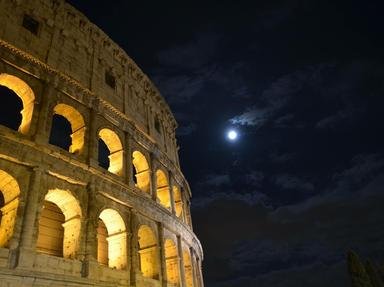Quiz Answer Key and Fun Facts
1. Creation of the Vestal Virgins
2. Increased membership in the Senate to 300
3. The Battle of Alba Longa
4. Instituted the first Roman census
5. Building of the Pons Sublicius (the first bridge over the Tiber)
6. Founding of the port of Ostia
7. Purchased the Sibylline Books
8. Participated in the assassination of his predecessor
9. Said to have reformed the Roman calendar by introducing two new months
10. Building of the Circus Maximus
11. Divided the city of Rome into four quarters
12. Construction of the original Roman Senate House
13. Traditionally thought to have introduced coinage to Rome
14. Called for the erection of the Temple of Jupiter Optimus Maximus
15. Building of the Cloaca Maxima began
Source: Author
bernie73
This quiz was reviewed by FunTrivia editor
trident before going online.
Any errors found in FunTrivia content are routinely corrected through our feedback system.
